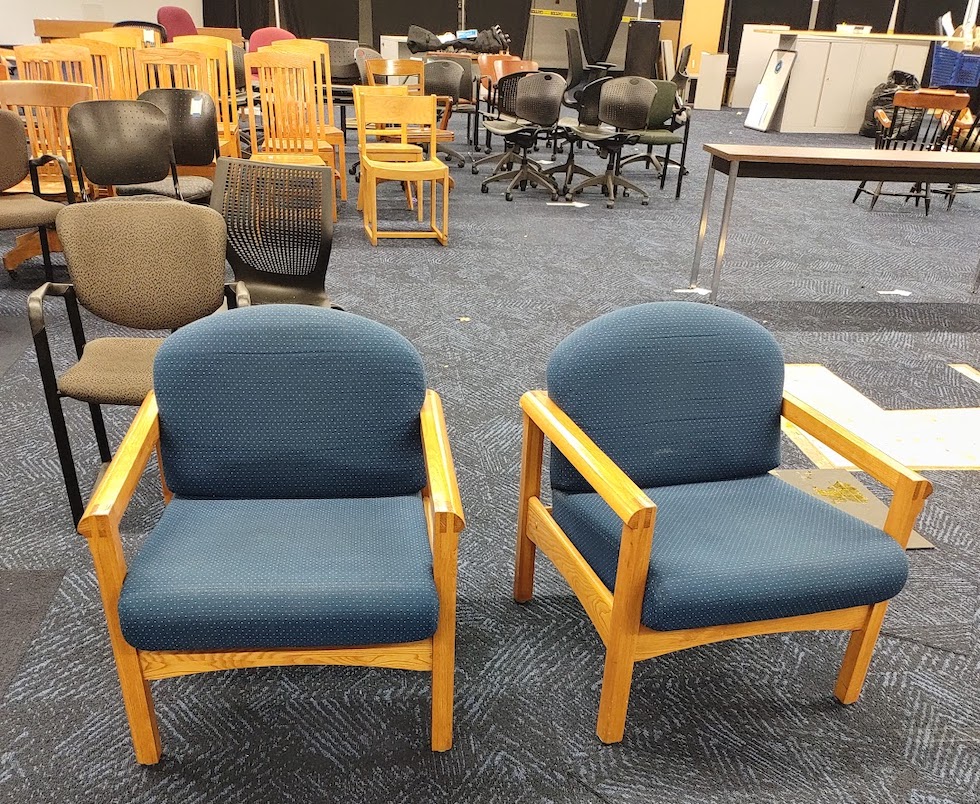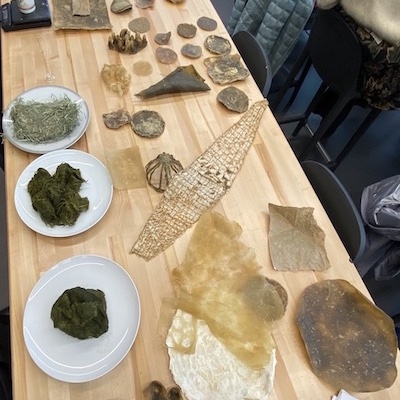Circularity is at the center of a growing movement, reaching into everything from fashion to gardening and food shopping. It’s a simple but powerful concept predicated on three guiding principles: smart design, reuse, and repair.
Barnard is a national leader in implementing a campus-wide circularity strategy, thanks to Sandra Goldmark, who initiated and leads the Barnard Circular Campus. Goldmark is the director of Barnard’s Office of Sustainability & Climate Action and associate professor of professional practice in theatre, as well as senior assistant dean for interdisciplinary engagement at the Columbia Climate School.
The striving for circularity started in 2017 when Goldmark discovered the results of a greenhouse gas emissions study, which found that food, travel, and other purchased items generated about two-thirds of Barnard’s emissions. That is more than the combustible fuel the campus burns and the emissions generated from electricity use. It was surprising to Goldmark to find that these everyday practices were creating so much pollution. It was even more alarming to learn that Barnard, along with many other institutions, wasn’t even measuring them.
“These behaviors touched almost every aspect of life on campus, from what people ate to how they furnished their offices to how [and whether] they sorted their trash,” said Goldmark. In realizing that this complexity demanded a holistic response, she explored circularity. It required a shift from the take-make-waste model to keeping objects and materials in use at their highest utility.
“We live largely in a linear system where we extract resources, make objects, and dispose of them quickly,” Goldmark said. “A circular campus is a holistic, systems-based framework designed to reduce emissions and waste, reduce costs, transform consumption patterns on campus, increase access and affordability for students, and support the transition to a just, sustainable economy,” explained Goldmark.
Circular Campus in Action
Since the beginning of the Barnard Circular Campus project, the College has moved several potent sustainability practices forward.
Barnard has developed a unique calculator to track those indirect, consumption-based emissions. Rheaply.com was established as the campus online reuse platform. In the College’s classrooms, circularity, climate, sustainability, and environmental justice are reflected in a wide array of courses. Barnard offers nine majors, minors, tracks, and concentrations related to climate or sustainability.
The circularity push has generated measurable results. During the 2022 end-of-semester move-out, circularity diverted 21,000 pounds from landfills. The College currently counts 1,200 Rheaply.com users, and those users have saved more than $31,000 since the fall of 2021.
Circularity now reaches into the Barnard campus life in many ways.
Julian Jones, who joined Barnard’s Capital Projects team in July as project manager, is fully aligned with Barnard’s circular sustainability ethos. As one of the leaders of the Francine A. LeFrak Foundation Center for Well-Being construction project, she has been working on clearing out Barnard Hall, where her team found an assortment of discarded objects. Partnering with Barnard’s associate director of sustainability & climate action, Leslie Raucher, the team developed a plan to donate, recycle, reuse, and give back to the Barnard community and beyond.
“There was all of this stuff, and we wondered — What can we do with it, rather than putting it all in the landfill?” said Jones. “A lot of the stuff we have is in very good condition.”
The plan drew plenty of takers.
“I have someone who works at P.S. 125 Ralph Bunche who needed a dry-erase board, and another person at Home Instruction Schools wanted some chairs. There was another person from the Home Instruction Schools who took six desks, six tables, six chairs,” said Jones. “It’s a holistic view of, yes, we’re doing construction, but we’re also trying to reuse as much as possible. The circle is my favorite shape!”
At the Barnard Design Center, design center coordinator Rebecca Naegele promotes circularity by selecting recycled materials and running workshops centered on circular design practices.
“Recently, we found a new eco-friendly 3D print filament. It’s made of algae and other more biodegradable materials. We’re doing our own research,” said Naegele. “We’ve also done some collaborations and partnerships in terms of workshops, sometimes with the sustainability group, and sometimes inviting outside designers and practitioners into our space to lead repair, design, and other practices that are oriented around eco-design, ecology, and sustainable businesses.”
Taking Circularity Beyond the Barnard Gates
This push to share, reuse, and repair is catching on. As concerns about the consequences of climate change have grown, so has the urgency to take action.
“Barnard has been a real leader in developing a circular campus in the U.S.,” said Goldmark. “We’ve recently started working with Morningside Area Alliance and the Manhattan borough president to try to expand beyond the gates.”
This month, Barnard’s sustainability office — in partnership with the Columbia Climate School and the Manhattan borough president’s office — is hosting a citywide celebration on campus. Circularity Day NYC will include the naming and awarding of several circularity champions who are committed to sharing, reusing, and repairing.
“Good design, reuse, and repair are all steps not just to better sort our waste but to avoid creating it, and the associated emissions, in the first place,” Goldmark explained. “But the first step is understanding how the objects we toss or don’t toss connect us to each other and to the rest of the world.”
* Field is a team of collaborators — artists, architects, scientists, and researchers — working on sustainability strategies.




